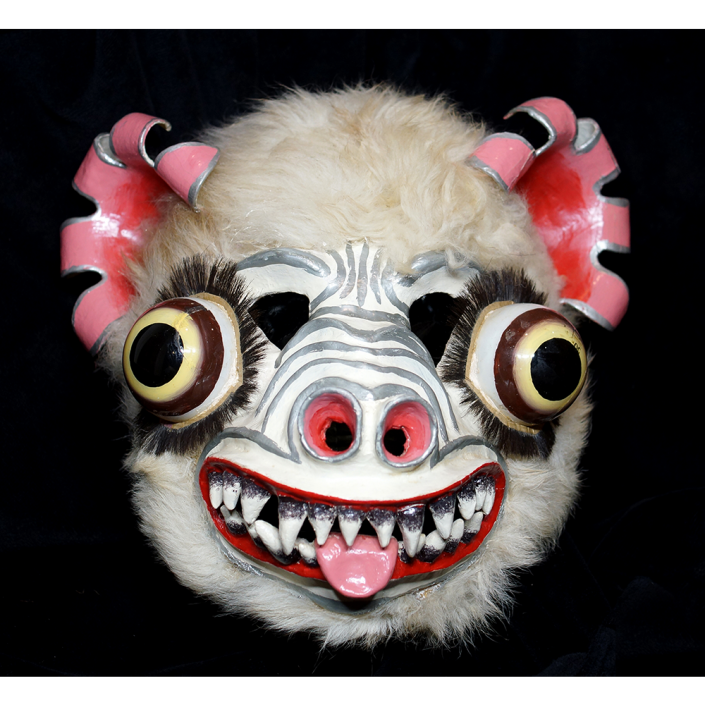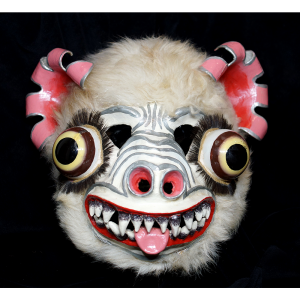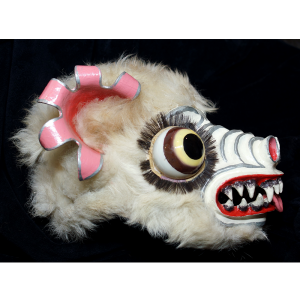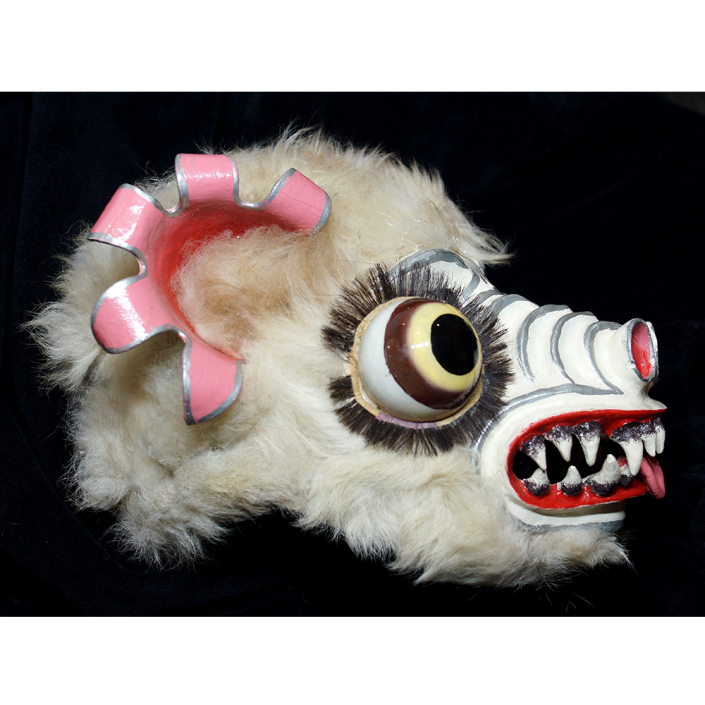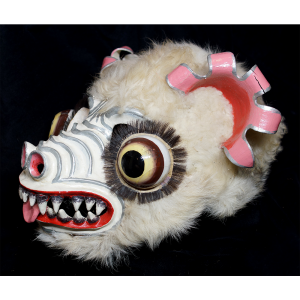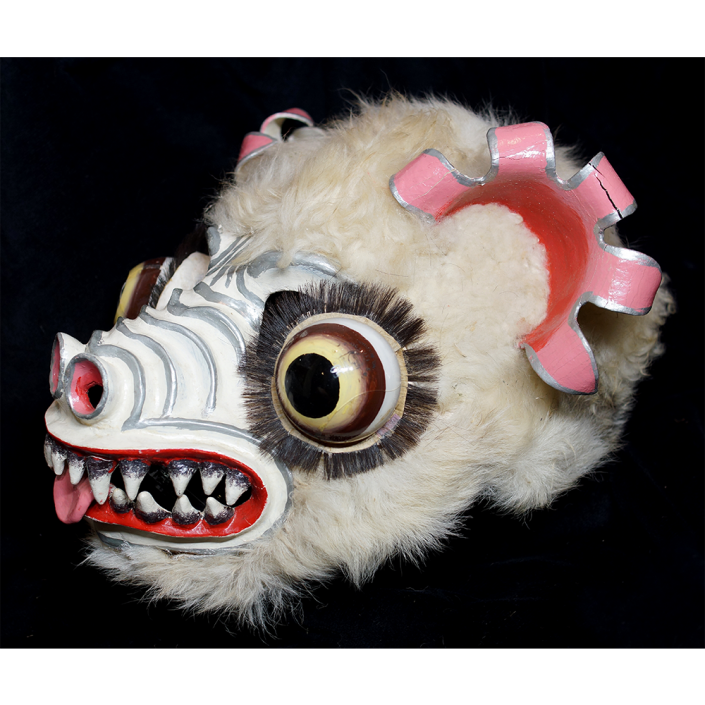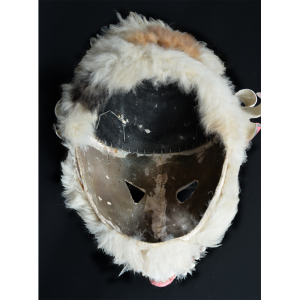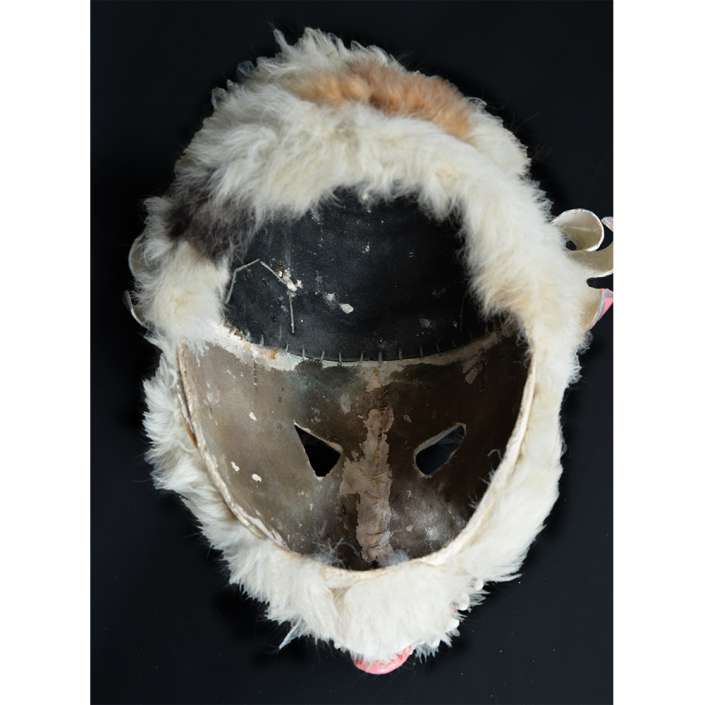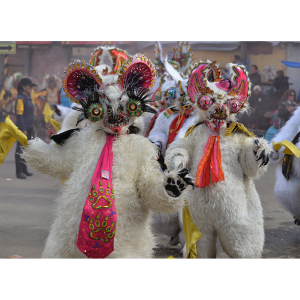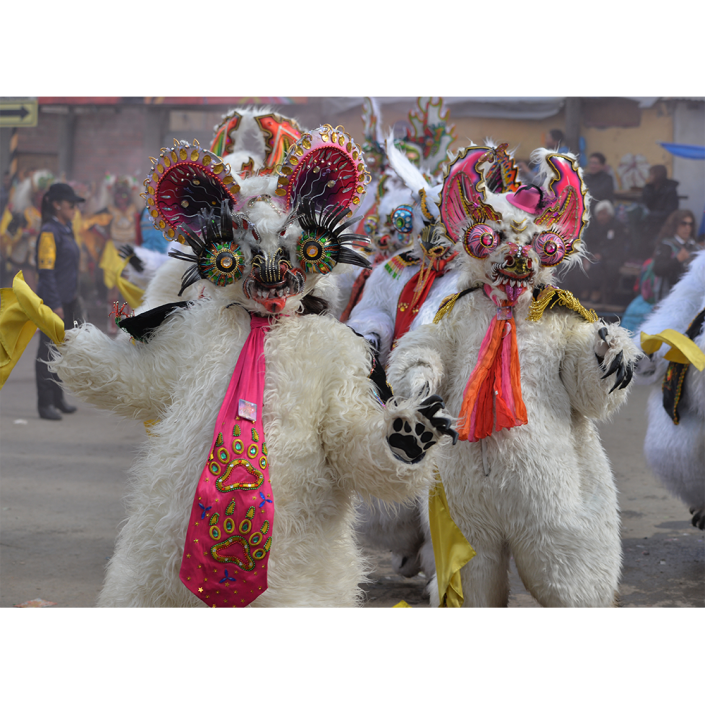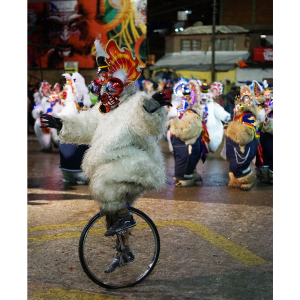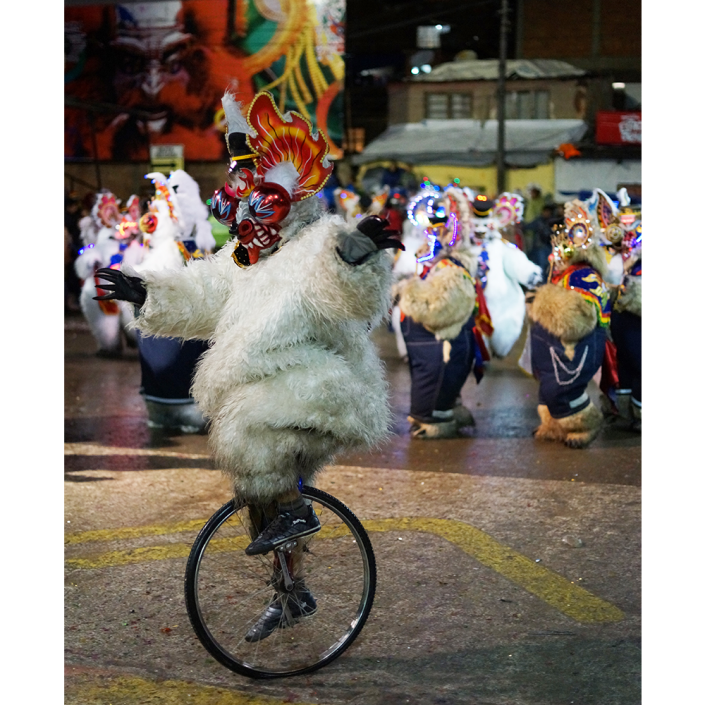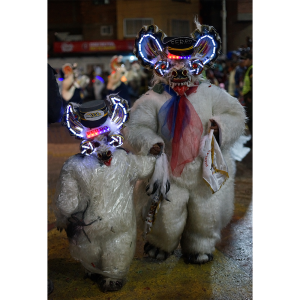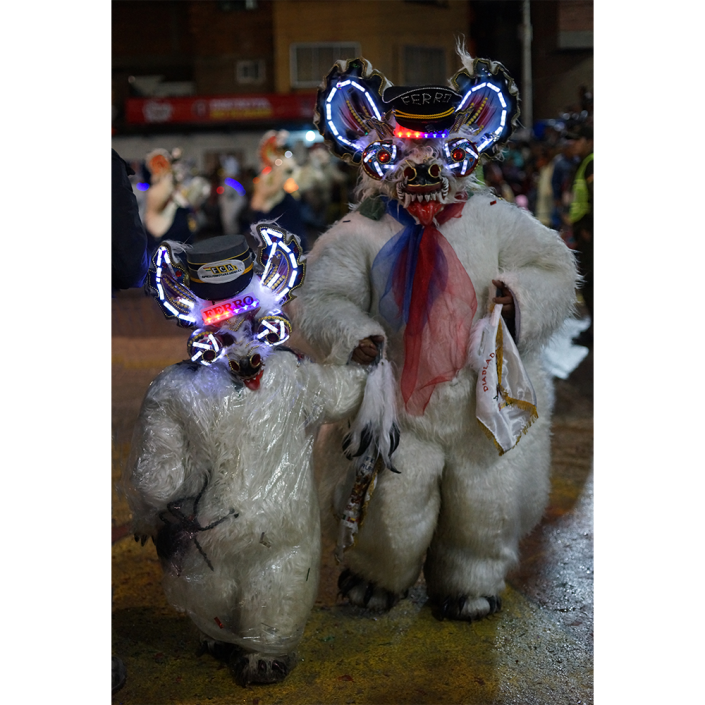TITLE: Jukumari Mask
TYPE: helmet mask
GENERAL REGION: Latin America
COUNTRY: Bolivia
SUBREGION: Oruro
ETHNICITY: Quechua and Aymara
DESCRIPTION: Jukumari (bear) mask
CATALOG ID: LABO029
MAKER: Unknown
CEREMONY: Carnival (La Diablada)
AGE: ca. 1960s
MAIN MATERIAL: felt covered with plaster
OTHER MATERIALS: paper maché ears; alpaca fur; glass lightbulbs; human hair; paint
The Diablada is an important part of Carnival in several towns in the Altiplano region of Bolivia, Peru, and northern Chile. The Diablada of Oruro, Bolivia, is famous for the large numbers of participants and the elaborateness of their masks and costumes.
The dance dates back to pre-colonial times and was adapted under the influence of the Spanish missionaries to conform to the Catholic doctrine of the struggle between good and evil. The dance begins with the Archangel Michael commanding personified seven virtues against Lucifer and his personified seven deadly sins and an army of male and female devils. Other non-European characters, such as the Andean Condor and the bear, also play a role. The dance typically occurs in the course of the parade, with marching bands playing musical scores dating back to the 17th century.
This mask represents the bear, or jukumari, and dates to the 1960s. It was made by the then-usual technique of putting felt or linen cloth over a fired clay mold, then applying plaster and letting it set. Lightbulbs were painted and used for eyes, and alpaca fur gives the bear a realistic look.
For more on Bolivian masquerade, see Peter McFarren ed., Masks of the Bolivian Andes (La Paz: Editorial Quipus/Banco Mercantil SA, 1993).
